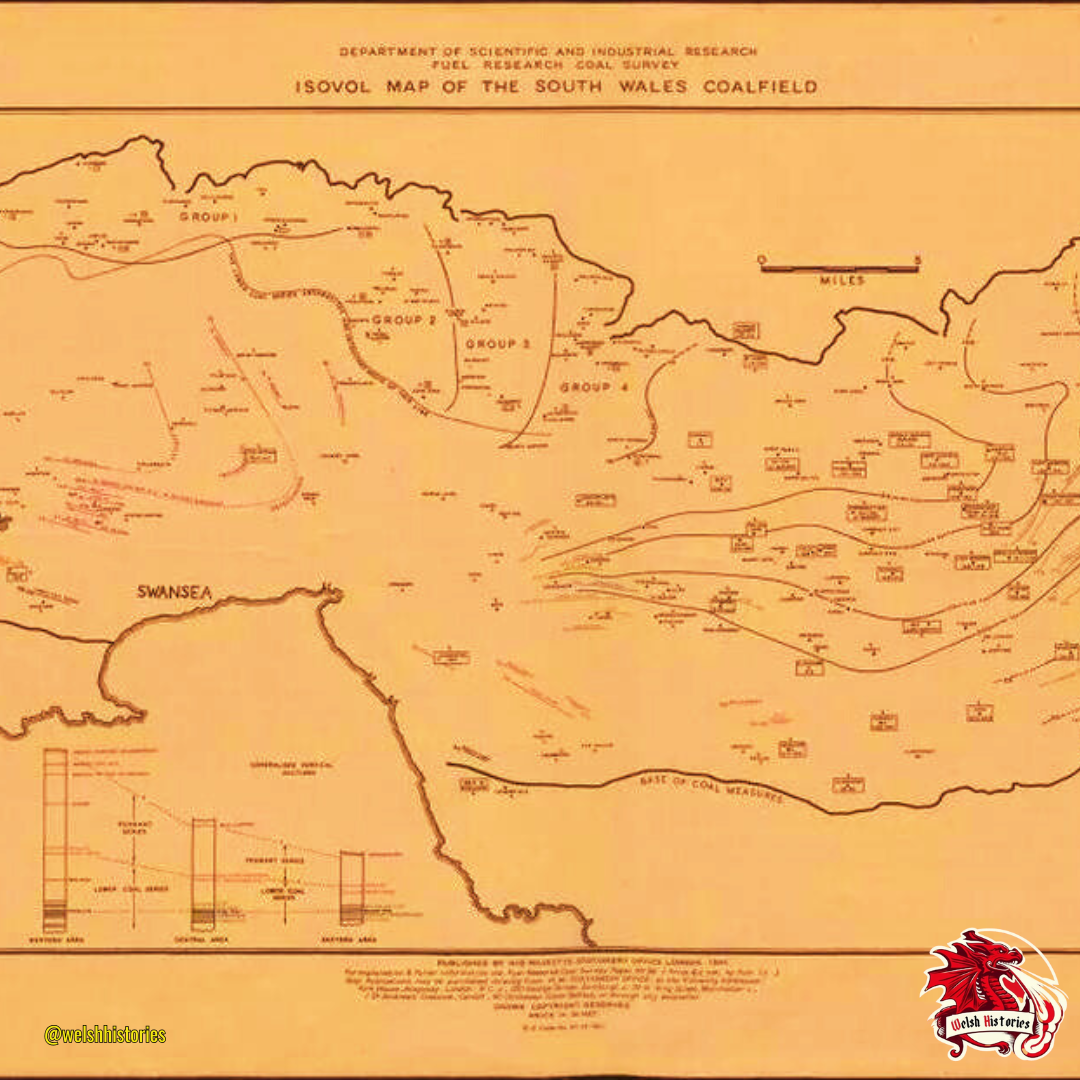Your basket is currently empty!

The Extent of the South Wales Coalfield
This is a map of the South Wales Coalfield from around 1944. You can see in the image just how large the coalfield was.
Wales & the Coal Connection
Cymru has a rich history closely tied to the mining industry, particularly coalmining.
The story of Welsh coalmining is one of labour, struggle, and profound societal changes. It played a pivotal role in shaping both the nation’s economy, its communities and the lives of its people.
The history of coalmining in Cymru can be traced back to the medieval period when coal was extracted for local use. However, it wasn’t until the 18th century that the industry gained significant momentum – reaching its peak in the 19th century. The demand for coal, a vital source of fuel for industry and transportation, led to the expansion of mining operations.
The Role of the South Wales Coalfield
One of the most significant developments in Welsh coalmining was the emergence of the South Wales Coalfield. This vast coalfield, stretching from the western coal mines in Pembrokeshire to the eastern coalfields near Newport, became the heart of Cymru’s coal industry. The South Wales Coalfield was a prolific producer of coal, providing fuel for the industrial revolution and powering the British Empire.
The coalmining industry in Cymru was marked by difficult and often dangerous working conditions. Miners toiled underground in cramped, poorly-ventilated tunnels. The risks of accidents (and there were many, such as Gresford and Senghenydd, which killed hundreds) and health issues were ever-present. These challenging conditions led to labour disputes and strikes as miners fought for better wages, safer workplaces, and improved living standards.
Tonypandy Riots
One of the most significant labour strikes in Welsh history were the Tonypandy Riots in 1910-1911. This strike, which centred in the Rhondda Valley, pitted striking miners against the authorities and mine owners. It resulted in violence and unrest, leaving a lasting mark on the collective memory of the Welsh people.
The coalmining industry wasn’t just a source of employment; it was the lifeblood of many Welsh communities. Entire towns and villages were built around the mines, with mining families forming tight-knit communities. The industry influenced the culture, traditions, and way of life in these areas.
As the coal mining industry declined in the latter half of the 20th century due to economic changes and a shift towards alternative energy sources, Welsh mining communities faced significant challenges. The closure of mines (which occurred rapidly during Margaret Thatcher‘s time as Prime Minister) had profound social and economic impacts, including high unemployment rates and the need for reinvention and adaptation.
Today, the legacy of Cymru’s coalmining is preserved in museums and heritage sites across Wales. The Big Pit National Coal Museum in Blaenavon, for instance, offers a glimpse into the lives of coal miners and the industry’s history. It serves as a reminder of the sacrifices and contributions of those who worked in the mines.
More from Welsh Histories
Welsh Histories is a Welsh history celebrating platform which looks to promote all aspects of Welsh history. Though we focus predominantly on native Welsh history, we do also share the non-native aspects from time to time. You can follow us on Facebook; Instagram or Twitter for more. You can also support us as a member of our Patreon community. A reader? We also have our very own Welsh Histories Shop where we sell our Welsh Histories Magazine. Diolch yn fawr iawn and keep enjoying Welsh Histories.
Niklas is the founder, owner, manager, editor, writer, video creator, voice over artist, and so forth, of Welsh Histories. He is passionate about the preservation of Welsh culture; the rejuvenation of the Welsh language and the promotion of Welsh history. Niklas currently resides in Pune, Maharashtra, with his beloved wife.


Leave a Reply